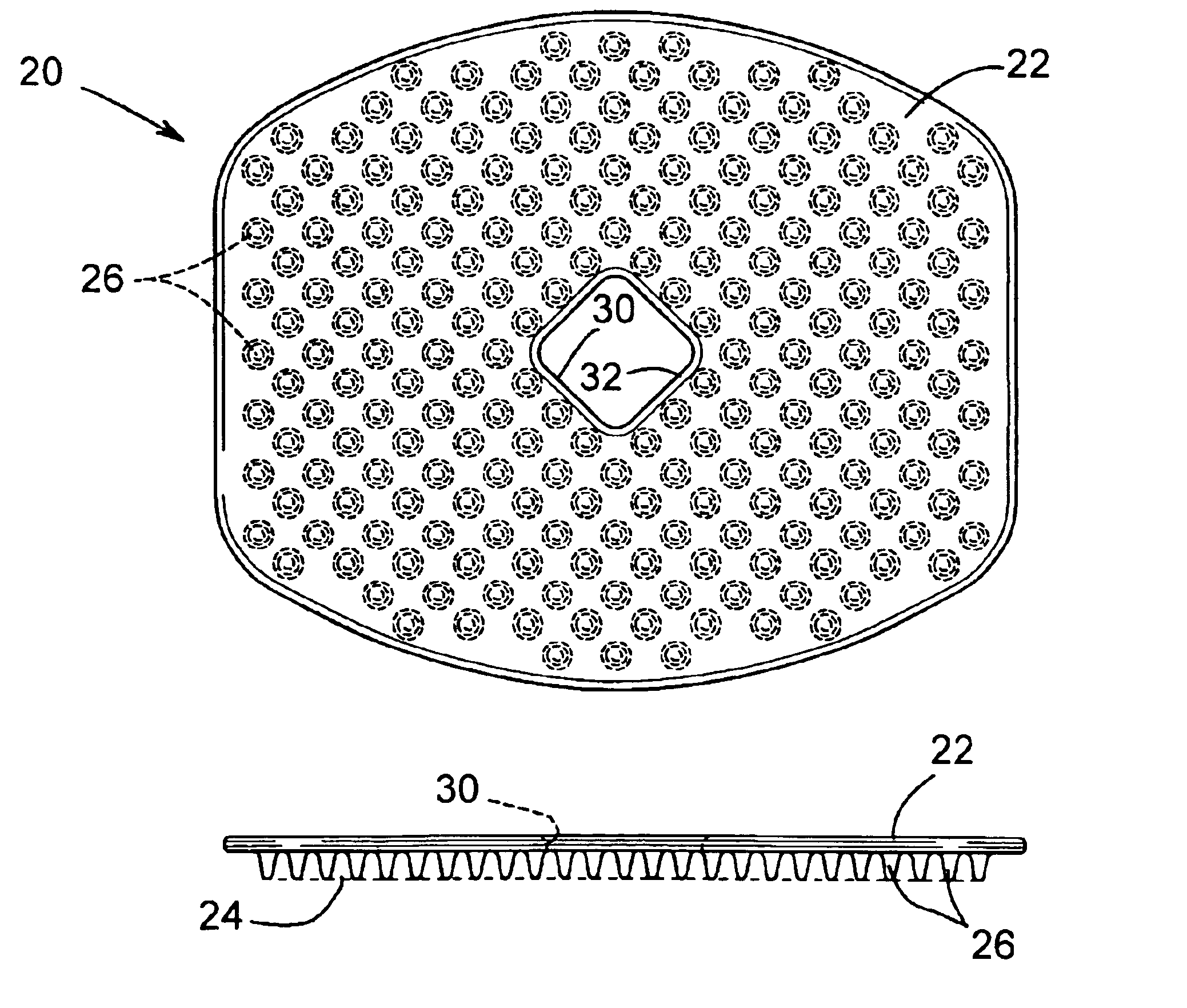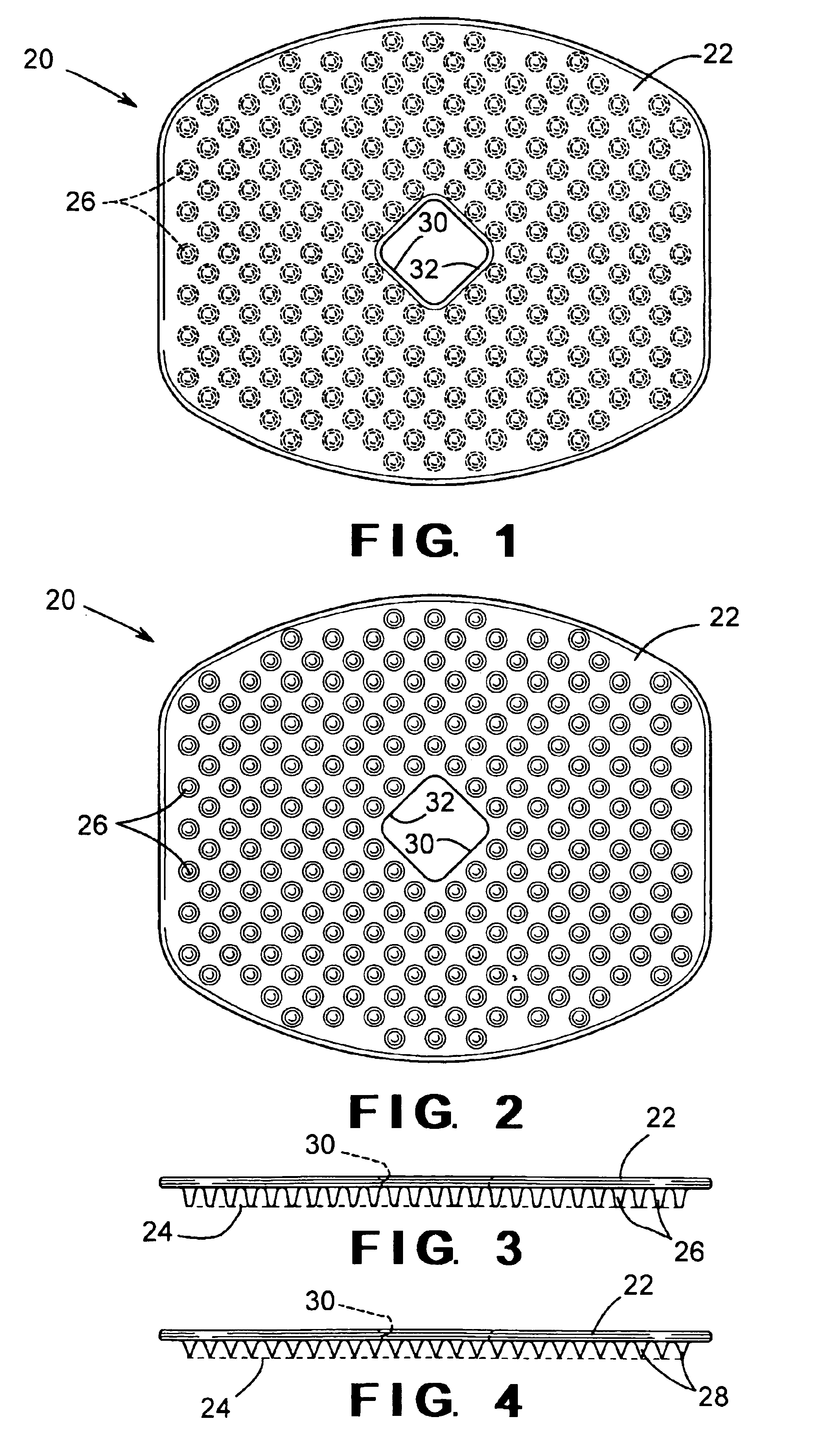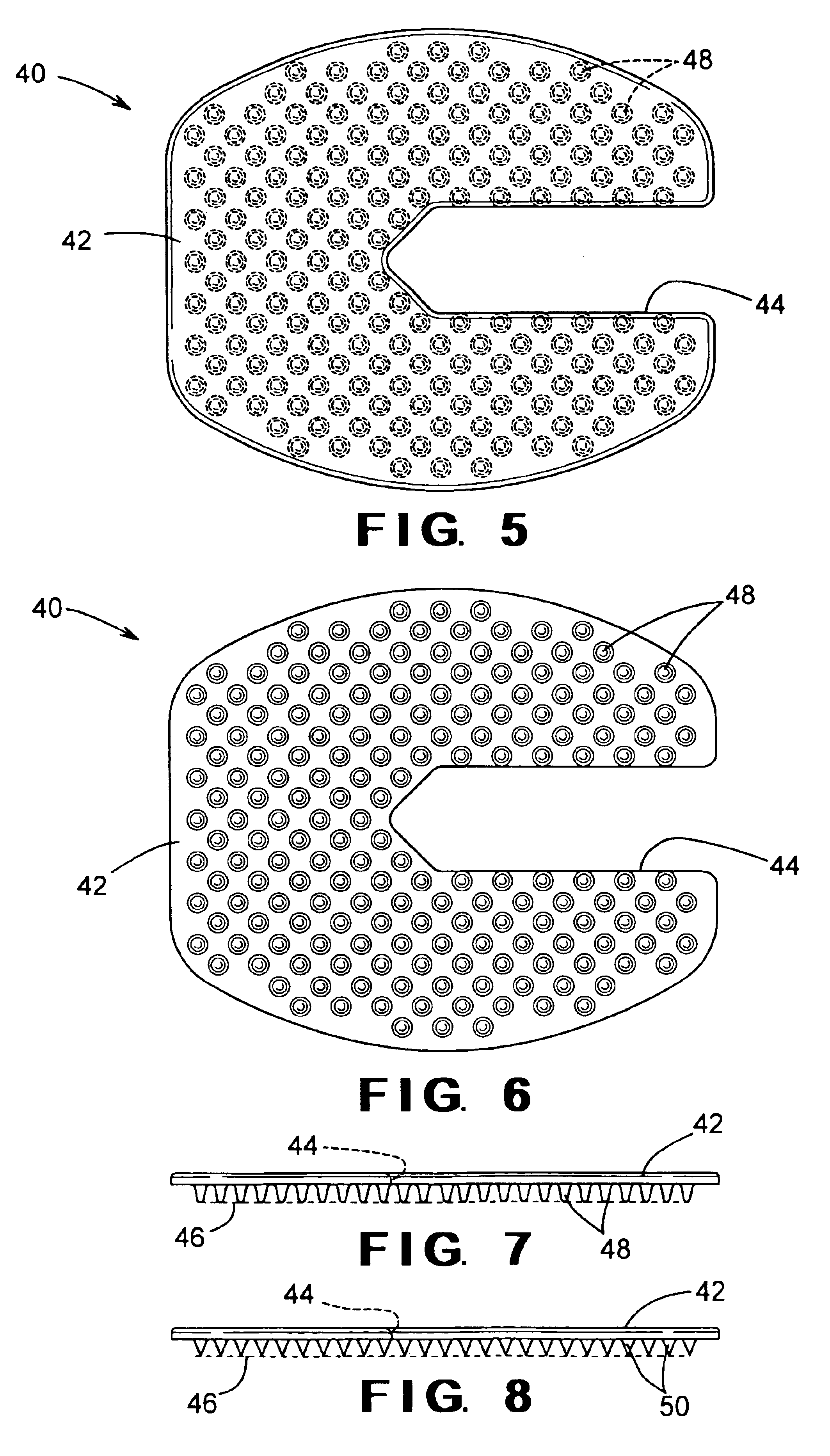Method for controlling the pain from injections or minor surgical procedures and apparatus for use therewith
a technology for applied in the field of controlling the pain of injections or minor surgical procedures and the use of apparatus therewith, can solve the problems of affecting the physician's ability to perform an examination, affecting the patient's rapport and confidence, and affecting the patient's health. the effect of blocking afferents, and reducing or eliminating pain
- Summary
- Abstract
- Description
- Claims
- Application Information
AI Technical Summary
Benefits of technology
Problems solved by technology
Method used
Image
Examples
Embodiment Construction
[0031]It is to be understood that the specific devices and processes illustrated in the attached drawings and described in the following description are simply exemplary embodiments of the inventive concepts defined in the appended claims. Hence, specific dimensions and other physical characteristics relating to the embodiments disclosed herein should not be considered as limiting, unless the claims expressly state otherwise.
[0032]Referring now to the drawings, FIGS. 1 through 3 show a first embodiment of an apparatus in accordance with the invention for reducing or eliminating the pain from injections or minor surgical procedures by the local application of pressure about the injection or surgical site to block afferent pain fiber transmission. The apparatus, denoted generally as 20 in the drawing, includes a pressure member 22. As illustrated in FIG. 3, the pressure member 22 is a relatively thin, generally flat disk that has a skin engaging surface 24 on its underside. In this fi...
PUM
 Login to View More
Login to View More Abstract
Description
Claims
Application Information
 Login to View More
Login to View More - R&D
- Intellectual Property
- Life Sciences
- Materials
- Tech Scout
- Unparalleled Data Quality
- Higher Quality Content
- 60% Fewer Hallucinations
Browse by: Latest US Patents, China's latest patents, Technical Efficacy Thesaurus, Application Domain, Technology Topic, Popular Technical Reports.
© 2025 PatSnap. All rights reserved.Legal|Privacy policy|Modern Slavery Act Transparency Statement|Sitemap|About US| Contact US: help@patsnap.com



